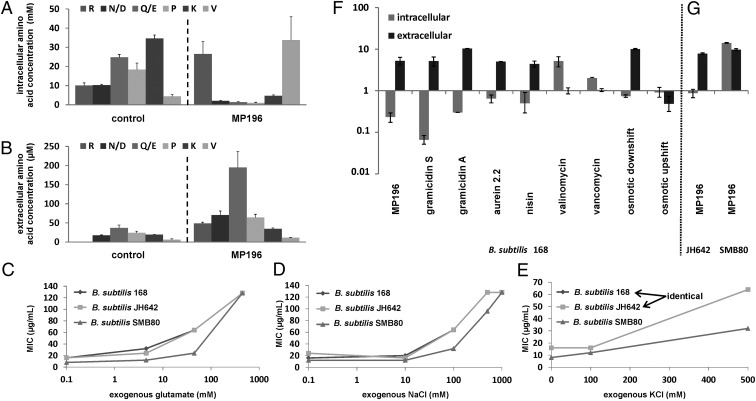Fig. 6.
Amino acid composition. (A) HPLC analysis of the intracellular amino acid composition of B. subtilis treated with MP196. (B) Extracellular amino acid composition of the same cultures. Only the amino acids whose concentrations changed significantly after peptide treatment are displayed here (see SI Appendix, Fig. S8 for full amino acid profiles). Amino acids are written in a one-letter code in the order of elution time from the column. Glutamate and glutamine as well as aspartate and asparagine are not distinguishable by this method and appear as one peak each. Tryptophan was not quantified here. (C–E) MICs of MP196 against B. subtilis 168, a B. subtilis strain lacking all known mechanosensitive channels (SMB80), and its parent strain (JH642) in defined medium supplemented with increasing glutamate (C), NaCl (D), or KCl (E) concentrations. MICs were determined independently twice. (F) Intra- and extracellular glutamate concentrations in B. subtilis cells under different antibiotic and osmotic stress conditions determined by amino acid analysis. (G) Intra- and extracellular glutamate concentrations in a B. subtilis JH642 and SMB80.

